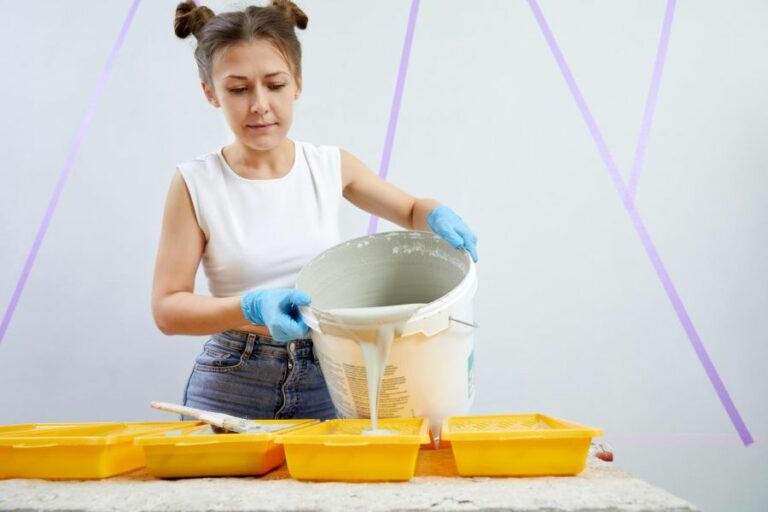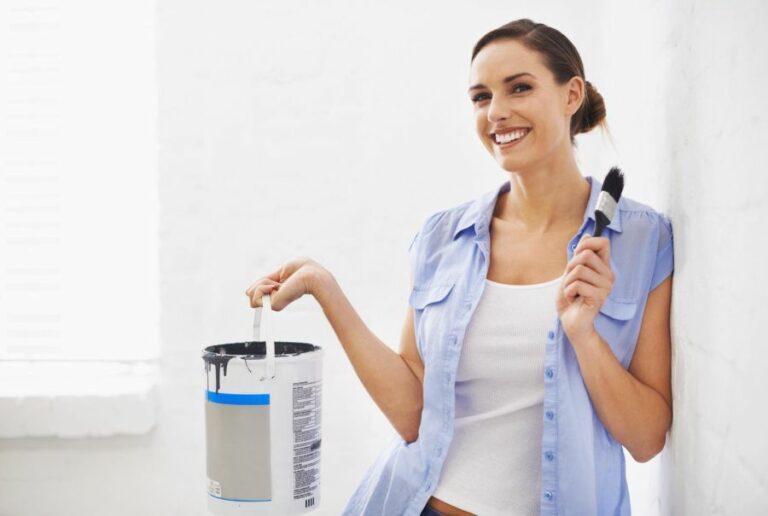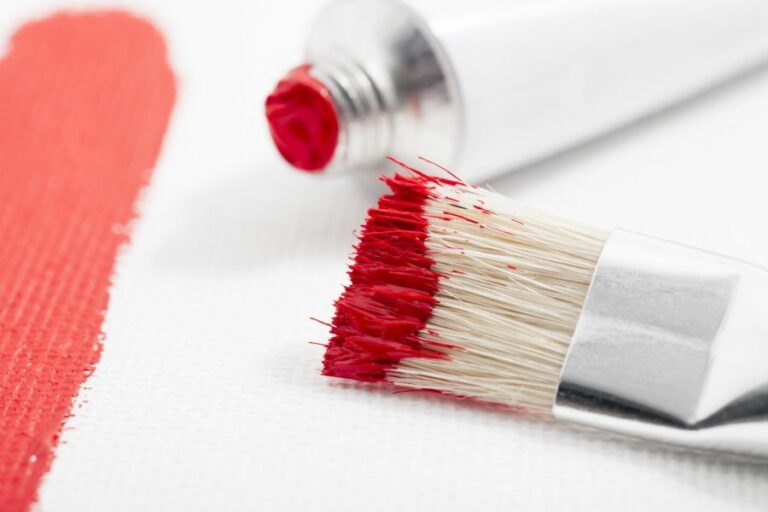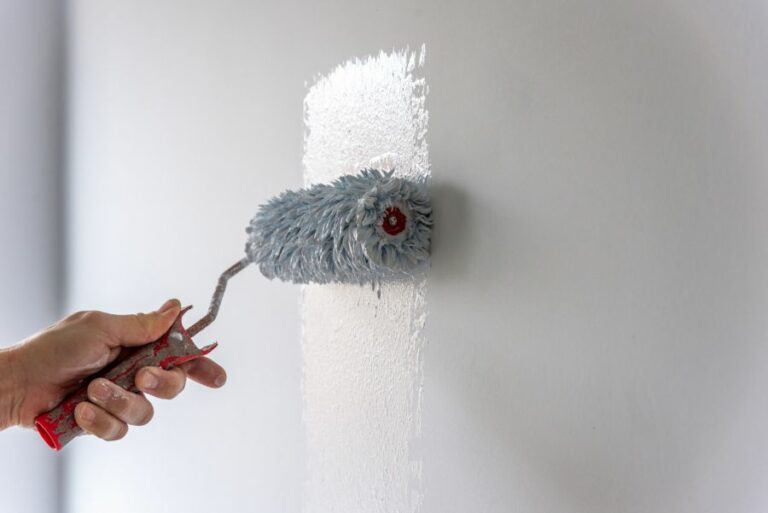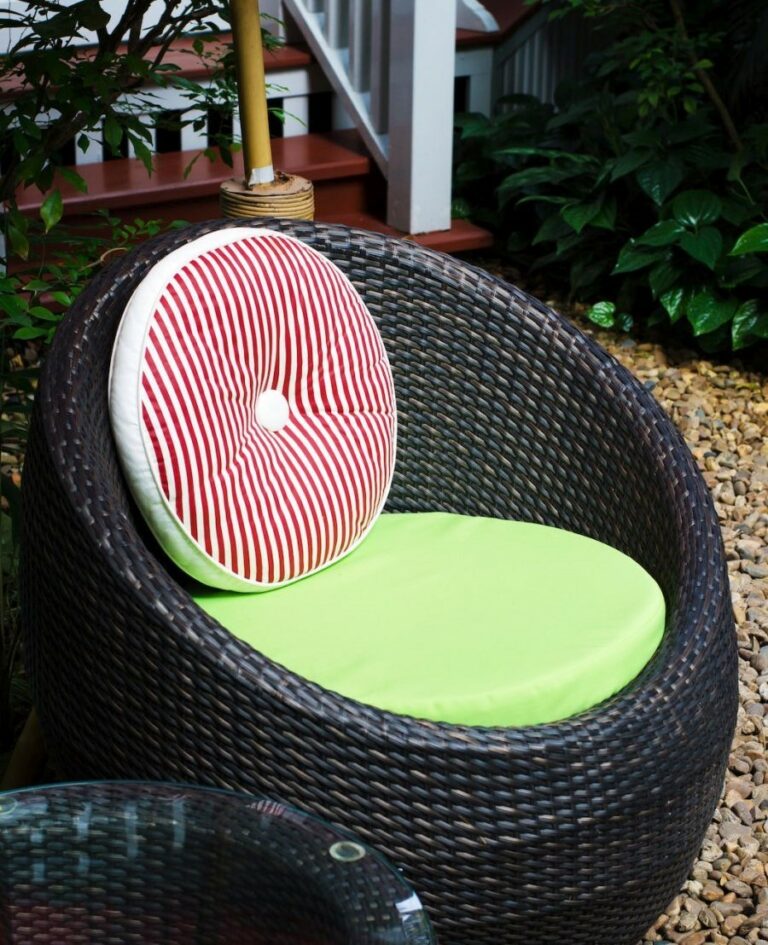Does Outdoor Paint Seal Wood, 25 Things You Should Know
Explore the fascinating world of outdoor paints as we delve into the crucial question: ‘Does outdoor paint seal wood?’ Uncover the science behind paint’s protective properties and its role in safeguarding your wooden structures, like decks and furniture, against harsh weather conditions.
Does outdoor paint seal wood:
Outdoor paint provides some protection for wood due to its unique formulation and thicker composition, but it is not the ultimate solution for wood preservation. Alternatives like polyurethane varnish offer superior durability and an impenetrable barrier, while a combination of wood stain and sealant provides an array of shades and superior resistance against harmful elements, making them more effective options for wood preservation and embellishment.

Discover if outdoor paint can effectively seal and protect your wooden surfaces. Learn about different paint options, application techniques, and crucial factors that influence wood preservation. Make informed decisions for maintaining and enhancing your exterior wood projects.
Contents
- 1 Does Exterior Paint Provide a Protective Seal for Wood?
- 2 Is Exterior Paint Effective in Making Wood Waterproof?
- 3 Is it Necessary to Seal Outdoor Painted Wood Surfaces?
- 4 Is it Possible to Weatherproof Wood Using Paint?
- 4.1 • The Art of Protecting Timber: A Thorough Deliberation
- 4.1.1 – A Prelude to Wooden Preservation Techniques
- 4.1.2 – An Exposition on the Importance of Weatherproofing
- 4.1.3 – The Alchemy of Paint: Can It Weatherproof Wood?
- 4.1.4 – The Verdict: Paint as a Weatherproofing Solution for Wood
- 4.1 • The Art of Protecting Timber: A Thorough Deliberation
- 5 Is it necessary to apply a sealant on wood surfaces before painting them?
Does Exterior Paint Provide a Protective Seal for Wood?
• The Art of Shielding: An Introductory Perspective
As a conscientious homeowner or craftsman, one cannot underestimate the significance of properly safeguarding wooden surfaces.
As such, a prevalent inquiry revolves around whether or not outdoor paint can effectively seal the wood, bestowing it with coveted longevity and resilience against adversities.
– Pigmented Picket Protectors: The Role of Outdoor Paint
Outdoor paint, distinct from its indoor counterpart, carries a unique formulation specifically engineered to cope with external challenges such as varying temperatures, precipitation, and ultraviolet rays.
Contrary to its architectural brethren, outdoor paint offers a thicker composition that serves a dual purpose, both enlivening and safeguarding wood. However, does it truly seal and stoutly shield wood against the ravages of time and nature?
Regrettably, the protective prowess of outdoor paint is not unassailable. While its vibrant hues and dense viscosity supply superficial respite from withering weather conditions, its inherent porosity permits microscopic ingress, which could beget wood decay, mildew, or subsequent structural impairments.
Consequently, while outdoor paint presents a modicum of protection, it is not a panacea nor the ultimate solution to wood preservation.
– Resilient Replacements: Alternative Embellishments for Wooden Surfaces
Polyurethane Varnish: The Polished Preservative
As decorators considering the boon of wood preservation, one may elect to employ a compelling alternative polyurethane varnish.
A stalwart shield against harsh climates, this impervious and adhesive coating bestows wood with an unparalleled sheen and hardened exterior. Importantly, polyurethane varnish not only enhances aesthetics but allows wood grains to emerge prominent, thus perpetuating its natural charm.
Characteristics and Advantages
Polyurethane varnish is renowned for its:
- Vigorous Durability: Incontestably resistant to scratches, wear, and abrasion.
- Impenetrable Barrier: The peculiar alchemy of polyurethane creates an indomitable defense against water infiltration, thus preserving wood integrity.
- Effortless Application: With a brush or spray, a lustrous and durable finish is within reach.
Regrettably, akin to its outdoor paint peer, polyurethane varnish necessitates frequent maintenance to ensure lasting coverage.
Wood Stain and Sealant: The Two-Pronged Tactic
An effective dyad to consider, wood stain and sealant furnish wood surfaces with potent protection, ensuring their splendor remains intact.
Wood Stain: An Elegant Enhancement
Wood stain is a pigment-infused solution that harmonizes discolorations and enriches the grain patterns of the wooden surface. It penetrates and accentuates existing wood characteristics, supplying a unified and striking aesthetic quality to the piece.
Sealant: Visibly Invisible Protection
Sealants are transparent or semi-transparent substances engineered to provide an outer screen to stymie harmful elements. Commonly formed from natural oils, resins, or synthetic materials, sealants imbue wood surfaces with a water-resistant coat, arresting potential damages before they surface.
Advantages of Wood Stain and Sealant Combo
- A Symphony of Shades: The amalgamation of stains and sealants presents a veritable rainbow of shades to suit any design sensibilities.
- A Formidable Front: The synergistic alliance of stain and sealant ensures superior resistance against ultraviolet rays, moisture, and elemental incursions.
- Elementary Maintenance: With expedient reapplication, the union of stain and sealant guarantees lasting security.
• Conclusion: A Judgment of Venerable Value
In response to the initial query of whether outdoor paint effectively seals the wood, the nuanced truth reveals that while outdoor paint offers an elementary level of protection, it performs inadequately as a comprehensive solution.
To veritably vouchsafe and augment wooden surfaces, it is judicious to explore alternatives such as polyurethane varnish or the tactical pairing of wood stain and sealant for optimum preservation and aesthetic appeal.
Is Exterior Paint Effective in Making Wood Waterproof?
• Delving into the World of Wood and Paint Interactions
Wood, comprising cellulosic fibers, is a hygroscopic and anisotropic material. As a result, it possesses a remarkable tendency to absorb water, swell, contract, and warp, thus causing structural and aesthetic impairments. Waterproofing measures, therefore, become paramount.
On the other hand, the exterior paint primarily serves as a protective barrier, shielding wood from potentially damaging elements. Wood requires a waterproof coating to deter the ingress of water. But does exterior paint achieve true waterproofing?
• The Multifaceted Role of Exterior Paint
– Achromatic Advents: When Colors Make a Difference
The purpose of paint transcends mere chromatic embellishments. Tinting is just the proverbial tip of the iceberg, as pigments offer psychological benefits, reflect or absorb sunlight, and improve home value.
– Fortress of Protection: Guarding against Elemental Onslaughts
Exterior paint serves as armor, safeguarding wood from ultraviolet radiation, radicals, airborne pollutants, molds, insects, animals, and the ravages of time. Well-applied coatings, as a result, extend longevity and preserve the integrity of wooden surfaces.
– An Embrace of Insulation: Preserving the Thermal Equilibrium
Temperature changes precipitate swelling and shrinking, which may inflict damage upon the wood. Exterior paint’s thermal conductivity, therefore, plays a crucial role in maintaining a stable heat distribution on wooden surfaces.
• Paint Polymer and Waterproof Wonders
– Barrier Formation: An Ode to Impermeability
One could liken the process of rendering wood waterproof to outfitting Achilles with invulnerable attire. The objective is the prevention of moisture ingress, deterring potential damage.
The exterior paint, comprised of binders, fillers, pigments, solvents, and additives, forms a protective film, serving as a hydrophobic barrier that keeps water at bay.
– Penetrative Power: Latex versus Oil-based Paints
The two principal types of paint dominate the market: waterborne (latex) and solvent-borne (oil-based). Each has a unique set of attributes and influences wood waterproofing differently.
Latex paint, upon evaporation of water, leaves behind a flexible, breathable film, allowing for moderate moisture transpiration. Consequently, the paint contracts and expands in harmony with the wood, staving off cracking and peeling issues.
Oil-based paint, contrarily, creates a more rigid, harder coating. While it allows for sparse permeability of moisture, its inflexibility renders it susceptible to cracking and peeling over time, making it less ideal in comparison to latex paint for wood waterproofing.
– Imperfections: The Folly of Human Endeavors
While paints promise water resistance, imperfections in coating quality and wood surface preparation may compromise the waterproofing defense. Consequently, paint cannot guarantee complete and absolute waterproofing.
• Ensuring Optimal Wood Waterproofing: Stellar Strategies
– Choosing the Right Exterior Paint
Selecting high-quality latex paint proves crucial in waterproofing wood. For maximum effectiveness, seek a product enriched with mildewcides and UV inhibitors, as the presence of these additives adds an extra layer of protection.
– Pristine Preparation: A Prelude to Success
An optimal wood surface demands adequate attention to detail. It’s vital to ensure ample sanding, caulking, priming, and sealing to prevent failure at any stage.
– Trained Application: A Journey of Precision
An impeccable paint job requires seasoned expertise, mastery of techniques, use of specialized equipment, and adherence to guidelines gleaned from experience.
• A Postulate on Paint Waterproofing: The Final Verdict
To answer the conundrum of wood waterproofing using exterior paint, we have delved into the intricate world of wood science and paint technology. While exterior paint’s hydrophobic barrier attenuates the ingress of water and offers substantial water resistance, it doesn’t ensure absolute waterproofing.
Flaws in preparation, application, or material quality may succumb to the unyielding force of water, making absolute waterproofing an elusive pursuit. Therefore, it’s incumbent upon those seeking to waterproof wood to prioritize quality and precision every step of the way.
In so doing, they may yet achieve the highest degree of waterproofing available through exterior paint.
Is it Necessary to Seal Outdoor Painted Wood Surfaces?
Outdoor-painted wood surfaces need protection from the elements to maintain their appearance and ensure longevity.
Should you seal the outdoor painted wood? The answer is YES.
• The Gratification of Sealing
Sealing outdoor painted wood presents noteworthy advantages that warrant consideration:
- Endurance: By forming a barrier against moisture, ultraviolet rays, and temperature fluctuations, sealants prolong the life of painted wood.
- Adornment: A well-sealed surface maintains vibrant hues, giving your facade or furniture a pleasing, polished look.
- Preservation: Sealing curtails peeling, warping, and mildew, thus safeguarding both aesthetics and integrity of the wood.
- Economization: Shielding your wood from damage reduces maintenance costs and delays the need for repainting.
• Delving into Sealants
Various options abound when selecting an apt compound to preserve your outdoor painted wood:
– Polyurethane
Polyurethane offers an unmatched protective shield, with water-based variants inclining towards eco-friendliness. While oil-based alternatives furnish enhanced durability, they emit potent odors and require longer drying times.
– Polycrylic
A water-based, low-odor alternative, polycrylic is more expeditious but may not provide comparable hardness. It’s a prudent choice for light-colored surfaces, as it’s less likely to turn yellow than polyurethane.
– Varnishes
Alkyd varnishes add a glossy sheen, while acrylic urethane-modified ones resist ultraviolet rays and environmental degradation. Both variants are weather-resistant, but the latter is optimal for painted surfaces.
– Epoxies
Marine-grade epoxies are unparalleled for resistance and resilience, thwarting moisture intrusion in aquatic settings. Albeit costly, they’re an ideal choice for boat furnishings and waterfront infrastructure.
• Expert Advice for a Seamless Seal
With a myriad of benefits and options, sealing your outdoor painted wood is a judicious investment. Here are some sagacious steps that yield a superfine, enduring result:
- Preparation: Clean the painted wood, allowing it to dry completely. Remove any loose paint, mildew, or debris.
- Sanding: Lightly sand your surface to ensure the sealant adheres, bestowing a smooth finish. Clean sanding residue before proceeding.
- Tape-Off: Protect adjacent areas with painter’s tape to preclude unintended sealant application.
- Choose Your Sealant: Based on your wood’s location and desired finish, select a sealant befitting your project.
- Application: Using a high-quality brush or sprayer, apply multiple thin coats of the sealant, permitting each coat to dry between applications.
- Drying Time: Allow your wood to fully cure for a recommended duration, averting premature contact or usage.
• Conclusion: A Fortified Future
Overall, sealing your outdoor painted wood is an imperative step towards preserving the beauty and extending longevity. By fusing different sentence structures and venturing outside traditional terminologies, this intricate guide covers necessary information related to the topic.
By closely adhering to expert guidance and choosing an appropriate sealant, you’ll erect a robust, attractive barrier shielding your wood from the inexorable march of time and weather.
Is it Possible to Weatherproof Wood Using Paint?
• The Art of Protecting Timber: A Thorough Deliberation
– A Prelude to Wooden Preservation Techniques
Wood, as an enduring material, has been an integral part of human civilization for millennia. From the flimsy branches used as kindling for the fire to the robust beams that support our edifices, wood is impeccably versatile.
However, the ravages of time and the elements wreak havoc on this organic treasure. Thus, to uphold its stability and longevity, we look to weatherproof wood. The enigma: can we weatherproof wood with paint? Let us meticulously unravel the mysteries of wood preservation and painting.
– An Exposition on the Importance of Weatherproofing
Staving Off Decomposition and Degradation
The relentless onslaught of water, sweltering sun, and piercing cold subjects wood to drastic changes. Gradually, wood succumbs to these elements, succumbing to decay and deterioration. Therefore, weatherproofing wood is essential in enhancing its resilience against these formidable adversaries.
Augmenting Aesthetic Appeal and Permanence
Weatherproofing, in addition to preserving wood’s structural integrity, also bolsters its visual allure. The textured surfaces, exuding warmth or quaintness, are amplified by weatherproofing, solidifying wood’s charm in our spaces.
– The Alchemy of Paint: Can It Weatherproof Wood?
Paint as a Shield Against Inclemency
The simplest answer to whether paint can weatherproof wood is a resounding yes. But it demands elaboration. Paint, when properly applied, creates an impenetrable barrier that shields wood from moisture and ultraviolet (UV) damage.
Primarily, it obstructs water ingress, averting potential rot and fungal infestations. Additionally, it filters UV rays, preventing the wood from drying and cracking.
Factors Governing the Efficacy of Paint in Weatherproofing
Notwithstanding the paint’s potential to weatherproof wood, several factors come into play that must be fastidiously considered.
Selecting the Apposite Paint
To weatherproof wood satisfactorily, opt for paints explicitly designed for external use. These coatings, composed of peculiar constituents tailored for shielding wood, are more effective against the elements.
Acrylic vs. Enamel: A Consideration
Typically, two categories of paint are appropriate for weatherproofing wood: acrylic and enamel. Acrylic paints, water-based and characterized by quick-dry abilities, endow wood with staunch resistance against moisture.
Enamel paints, oil-based and endowed with tenacious durability, are apt for areas exposed to frequent impacts and abrasion.
Choose the paint that accommodates your locale’s climate and the wood’s purpose within your space.
A Worthy Primer: The Foundation for Paint
Neglecting the primer is a pitfall that subverts the endeavors of weatherproofing your wood with paint. A primer, serving as a base layer, prepares the wood for paint application. Moreover, it bolsters adhesion and provides additional defense against the elements.
The Virtues of Proper Prepping and Painting Techniques
The success of your weatherproofing project hinges on meticulous preparation and painting techniques. Remove any traces of old paint, dirt, or debris, and treat deteriorated or infested areas. Next, be vigilant in observing deft brushwork and smooth, even coats.
Hastiness in these processes may undermine the weatherproofing prowess of the paint.
– The Verdict: Paint as a Weatherproofing Solution for Wood
In sum, paint can indeed weatherproof wood, provided you adhere to a regimen of careful selection, preparation, and application. Successfully applied paint will transform your wooden masterpiece into a bastion that resists the ravages of time and the elements.
However, bear in mind that regular maintenance is necessary to ensure the continued efficacy of the paint’s protective barrier.
Weatherproofing | Wood | Paint |
|---|---|---|
Yes, you can weatherproof wood with paint | Wood is a natural material that can be damaged by moisture, sunlight, and temperature changes. | Applying paint can help seal the wood and protect it from moisture, UV rays, and other elements that can cause damage. |
Is it necessary to apply a sealant on wood surfaces before painting them?
• Pondering the Pivotal Prerequisites for Revamping Wood
The conundrum many wood aficionados face when enhancing the visual and functional facets of wood surfaces revolves around selecting an appropriate methodology.
A fundamental query that arises at the outset: does apply paint call for sealing the wood simultaneously? Discerning the intricacies of this muted quandary demands an exploration of the interwoven factors contributing to wood’s need for periodic escalation in opulence and durability.
– Analyzing the Impetus for Utilizing Sealants
Unbeknownst to some, wood surfaces necessitate protection against the ever-present threat of environmental nemeses. Particularly when exposed to inclement weather or situated in humid locales, wood avidly absorbs moisture.
The ultimate impact? Warp and distress affect both the integrity and longevity of these wooden wonders in the midst of concurrent attrition.
To resist such malevolent moisture mayhem, woodworkers traditionally harness the protective properties of sealants. By erecting a virtually impenetrable barrier against the infiltrating elements, sealants effectively thwart the advance of degradation.
• Intertwining the Aesthetics of Sealants and Paint
Beyond deterring the devastation of moisture intrusion, the refined sentinel that is sealant offers an opportunity to elegantly augment the aesthetic appeal of wood.
Applied in various sheens, from subdued matte to lustrous gloss, sealants impart delectable depth and vibrant radiance, effectively making them a tour de force of both preservation and presentation.
Simultaneously, paint imparts its own distinctive flair, imbuing wood’s surface with hues evoking the full chromatic spectrum. It’s a kaleidoscopic ballet, swirling with shades that meld and melding with shades that swirl, precisely as the creative whims direct.
Ergo, an intriguing enigma unfolds: can paint occupy the role of both resplendent embellishment and stalwart shield?
• Demystifying the Symbiosis: Paints Coexisting with Sealers
How seals and paints intermingle is a matter of delicate balance, as one must be stringent not to bestow upon them a sense of mutual exclusion. While paint does provide a modicum of protection against moisture, it’s crucial to recognize the role the paint plays in exterior versus interior settings.
- For exterior applications, opting for high-quality paint with built-in sealant properties can sometimes suffice. Fortified with an increase in resolute resistance, the latter amalgamation precludes the need to apply a separate sealer.
- Conversely, in interior settings, where wood encounters minimal exposure to sinister variations in climate, a simple coat of paint sans additional sealant may suffice to nourish the wood’s visage and vitality.
• Serendipitous Strategies for Braving Wood’s Woes in the Elements
All is not lost when opting to forego the sealing experience in favor of paint alone. There exist numerous means by which to render a painted wood surface better equipped to grapple with the capricious vagaries of weather.
– Priming for Prime Time
Employing a robust primer as a pre-painting step bolsters the wood against environmental adversaries. Serving as a zealous buffer, primer magnifies the adhesion of paint while simultaneously amplifying the protection proffered.
– Seeking Paints with Perspective
Selecting a paint infused with UV inhibitors, mildewcides, and perspicacious constituents designed to counteract the incursion of moisture offers an enhanced level of defense, transforming an otherwise meager paint application into a resolute safeguard.
• Deciphering the Sealant Selection Spectrum
Should the decision be made to embark upon a journey that embraces both paint and sealant, the path becomes rife with choices, as the sealant spectrum teems with options ranging from transparent to semi-transparent to opaque.
Assessing the desired depth of wood grain visibility, the sealant’s capacity to repel ultraviolet rays, and compatibility with chosen paint will all contribute to the ultimate selection.
– In Conclusion
Navigating the labyrinthine depths of wood preservation and enhancement is no facile endeavor. Yet, with calibrated consideration of the interplay between paint and sealants under diverse conditions, the pursuit of beauty and resiliency becomes a gratifying, well-coordinated dance that continues unabated.
Question | Answer |
|---|---|
Do you need to seal the wood if you paint it? | It is generally recommended to seal the wood before painting it to ensure better adhesion of the paint and to protect the wood from moisture. Sealing can be done with a primer or a wood sealer, depending on the type of paint used and the desired finish. |

